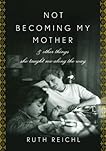 The Johnstown Flood by David McCullough
The Johnstown Flood by David McCulloughMy review
rating: 4 of 5 stars
Flooding, mass destruction, dislocated families, thousands of lives lost, whom to blame for inadequate construction? It could be a story of Katrina 2005, instead, it’s 1889 and the Johnstown flood (Johnstown, PA), where nearly 2500 people lost their lives after an earthen dam failed up stream at the South Fork Fishing and Hunt Club.
David McCollough, the Pulitzer prize winning author, describes in extraordinary, but plain-spoken prose, the events leading up to the dam’s failure, the massive devastation and death that results, and the attempt to rescue and recover in the days and months to follow.
This event wasn’t just a flood – for it was more an amalgamation of water, waste and debris – for it carried with it homes, farms, animals, humans, massive trees, railroad cars, train tracks, factories, and barbed wire, as the water carried everything in its path on its way to the valley of Johnstown. There the mass of rubbish was dumped on the town and log-jammed against on old stone bridge that miraculously held its footing (or the devastation would have continued down stream and been more tragic).
The organization implemented within hours of the tragedy to help identify the victims, missing, and dead, was nothing short of heroic and miraculous. The recovery effort started almost immediately and was done during a time without chain saws or dump trucks or cranes (or FEMA!)– any of those modern day conveniences we deem necessary for clean up work. It was all done by hand labor, mule trains and fires (to burn dead animals and other refuse) to rid the town of massive amounts of wreckage.
Following the flood, the outpouring of monetary relief was unprecedented (without the help of Sheryl Crow or Bono-related fundraisers!). Over $3.5million dollars was donated to help survivors, victims and work crews. Including donations from Salt Lake City where, “thousands turned out for a concert given in the huge Mormon Tabernacle, the proceeds of which were sent to Johnstown.”
This was a gripping book, and makes me want to make a trip to Johnstown to see what remains of the dam, visit the Grand View cemetery where the majority of the victims are buried and to view what Johnstown has become in the 100+ years since the flood.
View all my reviews.
















































